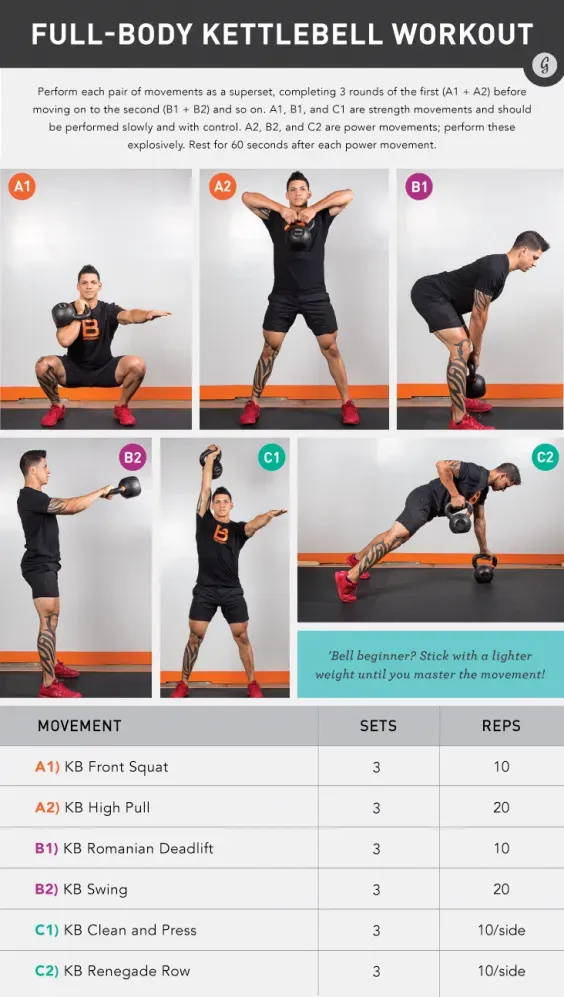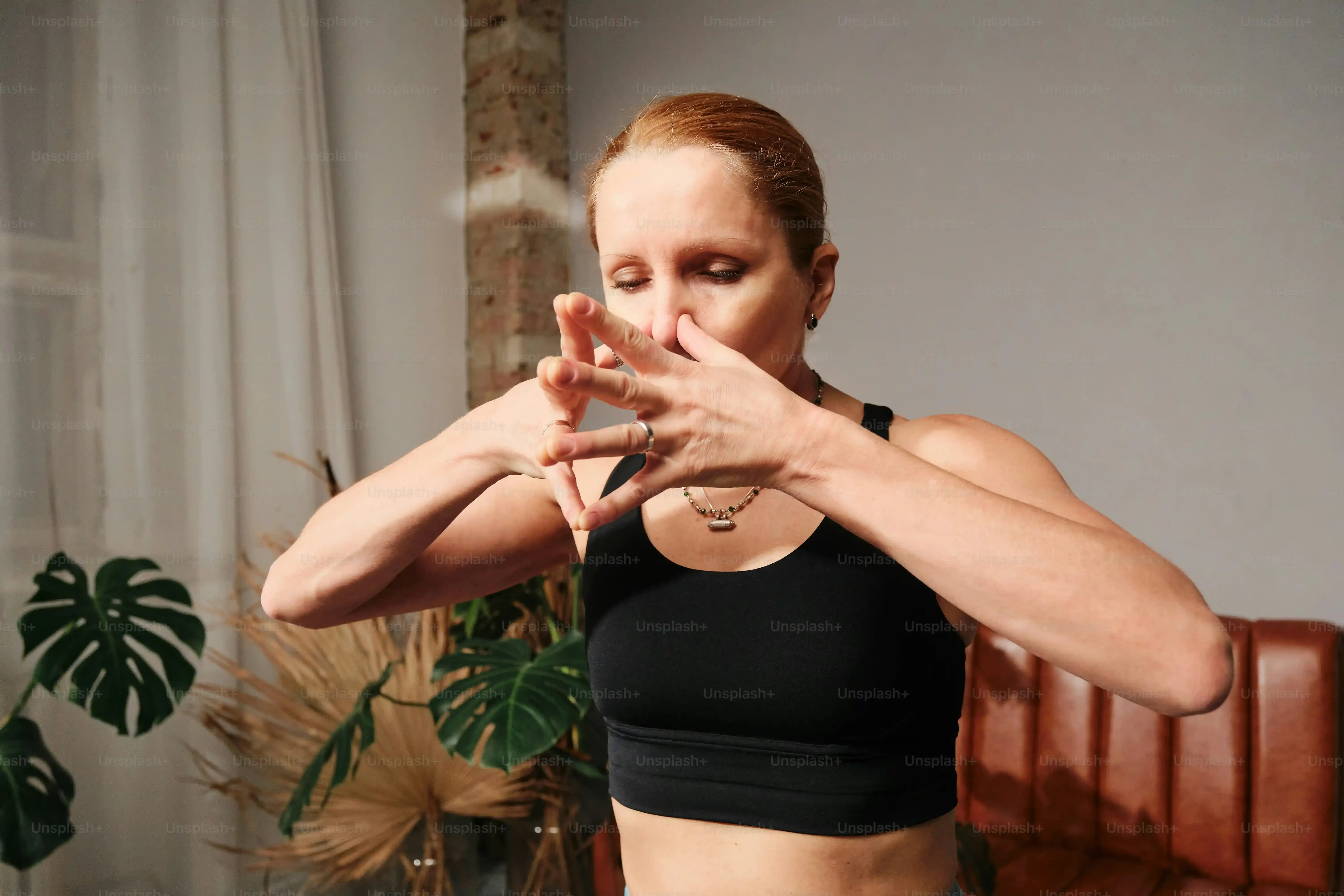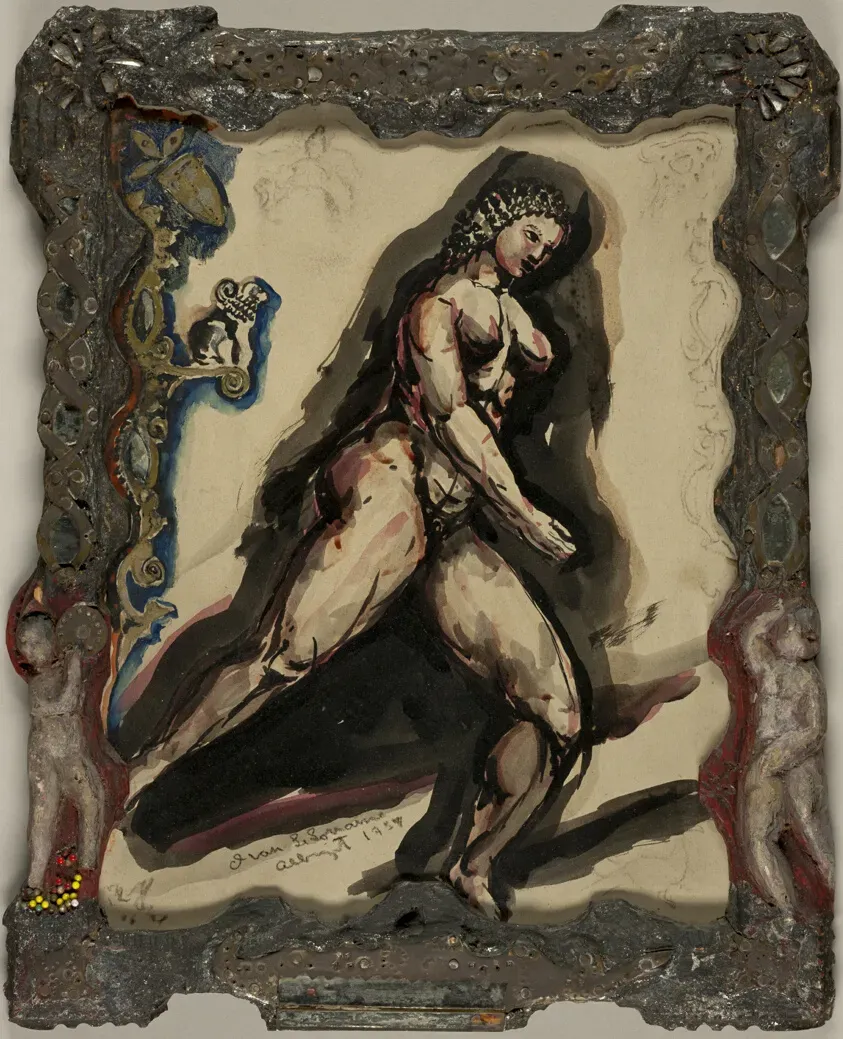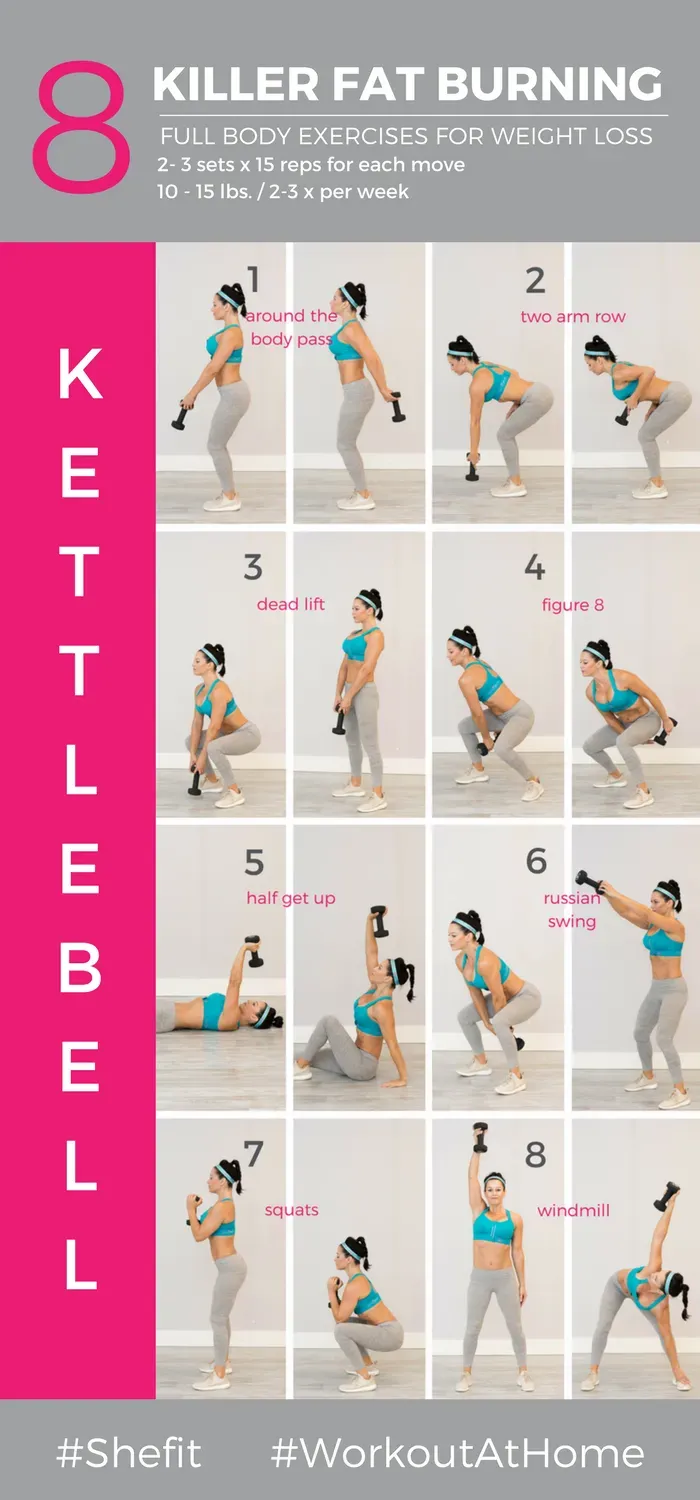Table of Contents
Thinking about getting into shape but feel overwhelmed by the gym or complicated equipment? You're not alone. Maybe you've seen those cannonball-looking weights and wondered if they're just for fitness fanatics swinging them around like mad. The truth is, a simple kettlebell can be your ticket to a seriously effective workout, even if you're just starting out. It doesn't take much space or a million different machines.
Why Start a Kettlebell Full Body Workout?

Why Start a Kettlebell Full Body Workout?
More Bang for Your Buck (and Time)
Look, nobody's got hours to spend at the gym every single day. Life gets in the way. That's where a kettlebell full body workout beginner routine shines. Instead of isolating one muscle group after another with machines, a kettlebell forces your whole body to work together. Think about a swing: your hips, core, back, shoulders, and grip are all firing. It's efficient. You can get a serious sweat going and hit major muscle groups in a fraction of the time compared to traditional weight training splits. It's like getting a strength workout and some cardio mixed into one messy, effective package.
Functional Fitness That Translates to Real Life
Ever tried to lift a heavy grocery bag, a squirming kid, or move furniture? That's functional strength. Kettlebell movements, especially the foundational ones you'll use in a kettlebell full body workout beginner plan, mimic real-world actions. Swings teach you to generate power from your hips, goblet squats help you learn to brace your core and lift heavy things safely off the floor, and presses build overhead strength needed for putting stuff away on high shelves. You're not just building show muscles; you're building a body that's capable and resilient for everyday tasks.
- Builds strength across multiple muscle groups simultaneously.
- Improves cardiovascular fitness during dynamic movements.
- Enhances core stability and grip strength.
- Develops power and explosive strength from the hips.
- Requires minimal equipment and space.
Accessible and Scalable for Anyone
Maybe you've been sedentary for a while, or perhaps you're coming back from a break. A kettlebell full body workout beginner program is incredibly scalable. You start with a light weight – something you can control comfortably – and focus purely on form. As you get stronger and more confident, you can move up in weight. The movements themselves can also be modified. Can't do a full swing yet? Start with deadlifts. Struggling with overhead press? Work on floor presses. It meets you where you are and grows with you, unlike some complex exercises that feel impossible from day one.
Picking Your First Kettlebell and Getting a Grip

Picking Your First Kettlebell and Getting a Grip
Alright, you're sold on the idea of a kettlebell full body workout beginner routine. Now comes the million-dollar question (or maybe just $50-100, depending on where you buy it): what size kettlebell do you actually need? This isn't like picking a dumbbell where you grab a few different pairs. You'll likely just get one to start, so pick wisely. Going too heavy too soon is a fast track to bad form and maybe a pulled muscle. Think about it – you're learning new movement patterns. You wouldn't try to run a marathon the first day you lace up sneakers. For most women starting out, an 8kg (about 18 lbs) kettlebell is a solid bet. For men, 12kg (about 26 lbs) or 16kg (about 35 lbs) is a common starting point. But honestly? If those feel heavy just picking them up off the floor, start lighter. There's zero shame in using a 6kg or even 4kg to drill the movement patterns. Focus on controlling the weight, not just moving it. As for the grip, for most moves, you want the handle seated comfortably in your palm, not just your fingertips, keeping your wrist relatively straight and your shoulder blade pulled down and back, like you're trying to tuck it into your back pocket. This "packed" shoulder is key for stability.
Your Simple Kettlebell Full Body Workout for Beginners

Your Simple Kettlebell Full Body Workout for Beginners
Structuring Your First Kettlebell Session
you've got your kettlebell, you know how to hold the darn thing, and you're ready to actually *do* something with it. A great way to approach a kettlebell full body workout beginner routine is using a circuit format. This means you'll do one exercise right after the other with minimal rest in between, and once you've done all the planned exercises, that counts as one "round" or "circuit." Then, you rest for a bit before starting the next round. This keeps your heart rate up, making it fantastic for conditioning, while still building strength. It’s efficient, effective, and frankly, less boring than doing three sets of ten of just one thing before moving on.
Putting the Moves Together for a Simple Circuit
So, what goes into this beginner circuit? We're going to stick to foundational movements that are relatively easy to learn but incredibly effective. Think about exercises that work multiple muscle groups at once. We'll cover the specifics of *how* to do these in the next section, but for your first kettlebell full body workout beginner session, a simple circuit might look something like this. You'll pick a number of repetitions for each exercise (say, 8-12 reps) and cycle through them. Aim for 2-3 rounds to start. It won't take long, maybe 15-20 minutes including warm-up and cool-down once you get the hang of it.
Here’s a common starting lineup:
- Kettlebell Halos
- Goblet Squats
- Kettlebell Swings (or Romanian Deadlifts if swings feel too complex initially)
- Overhead Press (single arm)
- Bent Over Rows (single arm)
Rest for 60-90 seconds after completing one round of all exercises before starting the next. Don't rush the rest; use it to catch your breath and prepare for the next set.
Mastering the Moves: Form Tips for Your Beginner Workout

Mastering the Moves: Form Tips for Your Beginner Workout
It's Not About Lifting Heavy (Yet)
Look, the kettlebell swing looks cool, like you're ringing a big bell made of iron. But if you try to just muscle it up with your arms or, worse, your lower back, you're asking for trouble. For a kettlebell full body workout beginner, form is everything. Seriously. More important than the weight, more important than how many reps you do. Bad form with a kettlebell is like trying to use a screwdriver as a hammer – it won't work well, and you might break something. Think about bracing your core like you're about to get punched in the stomach before every rep. Keep your shoulders packed down and back. Imagine you're trying to stand tall and proud, not hunching over like you just got bad news.
Getting Down with Goblet Squats and Swings
Let's talk specifics for a couple of those foundational movements in your kettlebell full body workout beginner routine. The Goblet Squat is your best friend for learning how to squat properly. Hold the kettlebell by the horns (the sides of the handle) against your chest. Keep your chest up, push your hips back like you're sitting in a chair, and descend while keeping your back straight. Go as low as you can comfortably while maintaining good posture. Don't let your knees cave in. For the swing (or RDL), remember it's a *hip* hinge, not a squat. The bell should travel back between your legs, your back stays flat, and you explosively snap your hips forward to propel the bell. Your arms are just ropes guiding the bell, not lifting it.
Common Beginner Form Mistakes:
- Rounding your back during swings or deadlifts.
- Squatting the swing instead of hinging at the hips.
- Letting your knees cave inward during squats.
- Using your arms to lift the bell in a swing (it's a hip movement!).
- Not bracing your core throughout the exercise.
Pressing Overhead and Pulling Strong
The single-arm Overhead Press needs control. Clean the kettlebell to the front rack position first (bell resting on the back of your forearm, handle near your collarbone). Brace your core hard, keep your glutes squeezed, and press the bell straight up overhead. Don't lean back excessively. Lower it with control. For the Bent Over Row, hinge at your hips, keeping your back flat. Pull the kettlebell towards your hip, squeezing your shoulder blade. Control the eccentric (lowering) phase. These moves build serious upper body and core strength, but only if you do them right. Start light, film yourself if you can, and compare it to videos of good form. It's worth the effort to nail the technique early on.
Sticking With Your Kettlebell Full Body Routine

Sticking With Your Kettlebell Full Body Routine
Consistency Beats Intensity (Especially Early On)
Starting a new workout routine, like a kettlebell full body workout beginner plan, feels great for a week. You're motivated, maybe a little sore in a good way. The real test is week two, three, a month in. That's when life happens, motivation dips, and suddenly the couch looks way more appealing than swinging iron. The trick isn't to do insane workouts every single time; it's to just *do* them. Aim for 2-3 sessions a week. Mark it on your calendar. Treat it like any other appointment you wouldn't skip. Even a shorter, slightly less intense workout is infinitely better than skipping it entirely. Building the habit is the hardest part, but once it's locked in, it becomes just another part of your week, like brushing your teeth or complaining about traffic.
Listen to Your Body and Don't Fear Progression
As you get more comfortable with your kettlebell full body workout beginner moves, you'll notice things getting easier. That's not a sign to stop; it's a sign to evolve. Maybe you can do more reps within the same time, or maybe you're ready for a slightly heavier bell. Pushing yourself a little is necessary for continued progress, but listen to your body. If something feels sharp or wrong, stop. It's not a competition. You can always scale back, rest, or work on form with a lighter weight. Progression isn't just about heavier weight either; it can be doing more rounds, shortening rest times, or improving the fluidity and power of your movements. Keep a simple log if that helps – just jotting down the weight used and rounds completed can show you how far you've come.
What's one small step you can take today to make your next workout happen?
Celebrate Small Wins and Find Your Tribe
You nailed your first set of proper swings? Awesome. You finished all three rounds without feeling completely wiped? High five. Acknowledging these small victories is crucial for staying motivated with your kettlebell full body workout beginner journey. Don't wait until you're lifting a monstrous weight or have visible abs to feel successful. Every workout completed, every rep done with better form, is a win. Finding others who are also exploring kettlebells, maybe online or in a local class, can also provide support and accountability. Sharing tips, struggles, and successes makes the journey feel less solitary. Remember why you started, focus on consistency and good form, and the results will follow.
Your First Swing Towards Fitness
So, you've got the basics. You know how to pick a kettlebell that won't send you to the chiropractor, you've got a simple routine in hand, and you've seen the core moves broken down. Starting a kettlebell full body workout beginner journey isn't about overnight transformations or looking like a competitive lifter next week. It's about consistent effort, focusing on solid form over heavy weight initially, and building a foundation. Stick with these fundamental exercises, listen to your body, and don't be afraid to repeat the same workout a few times to really nail the movements. The progress might feel slow at first, but showing up is half the battle. Keep swinging, keep practicing, and you'll build strength you didn't know you had.